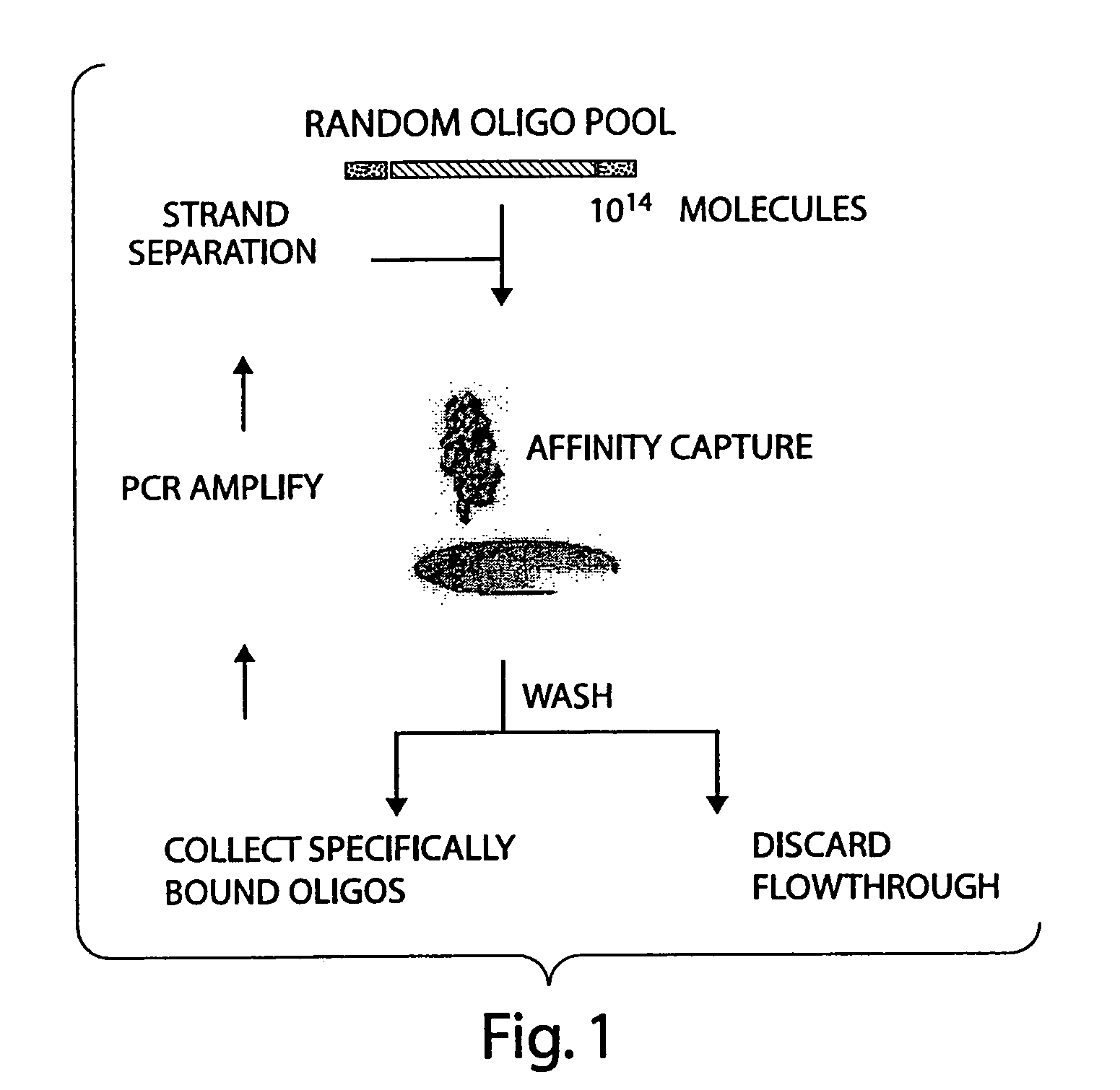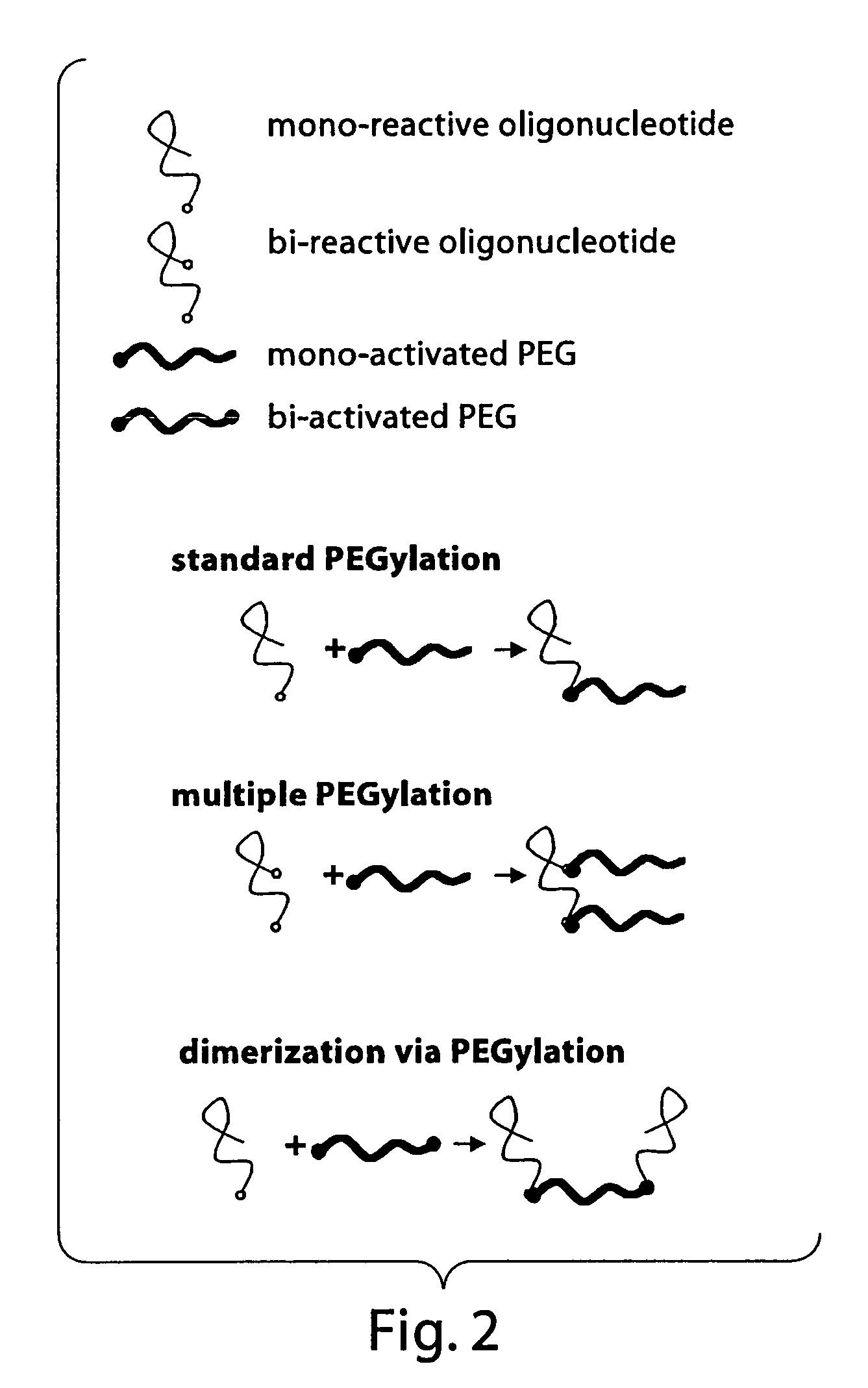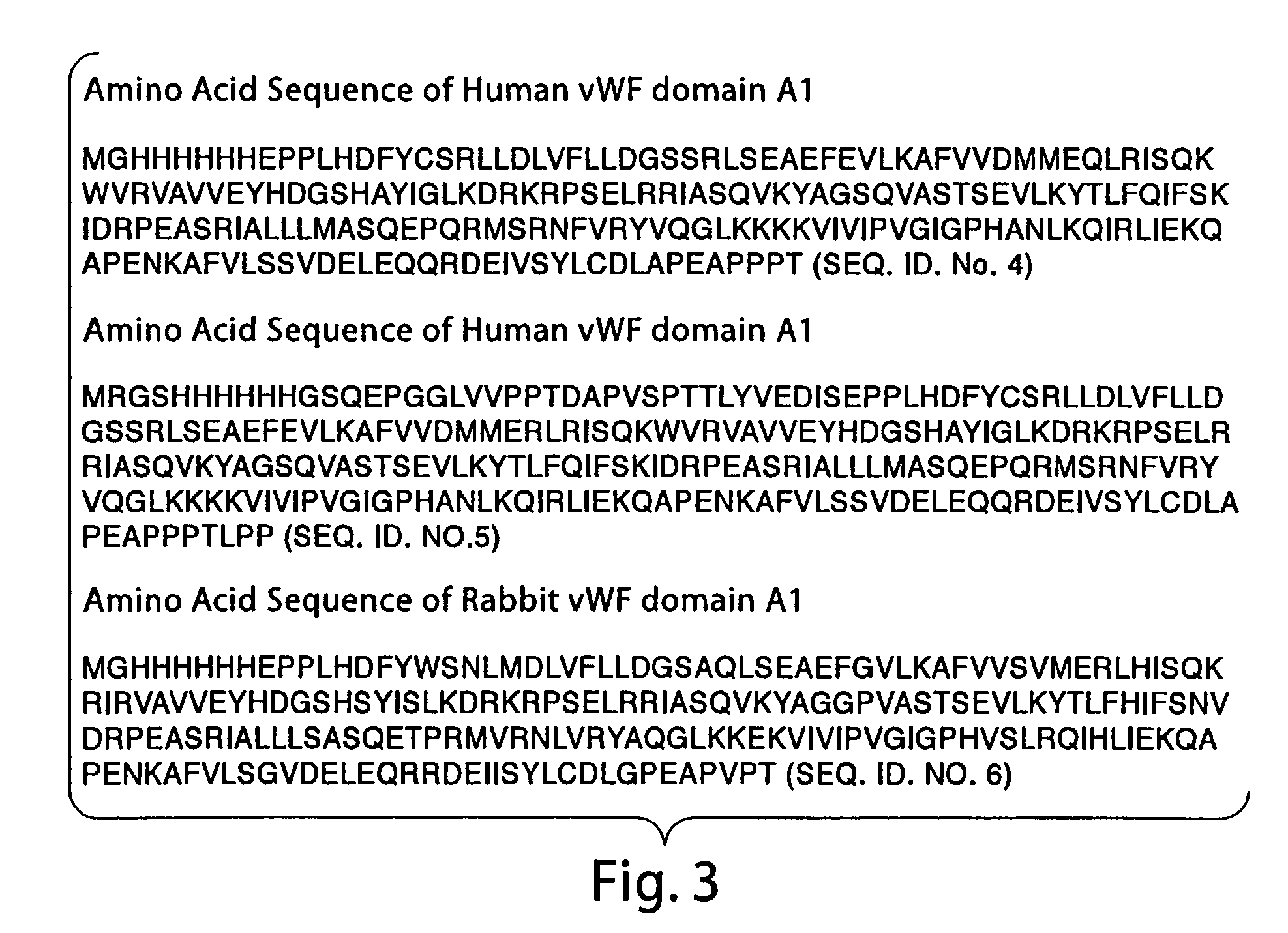Aptamers to von Willebrand factor and their use as thrombotic disease therapeutics
a technology of von willebrand factor and aptamers, which is applied in the field of nucleic acids, can solve the problems of limiting the availability of some biologics, scalability and cost, and the difficulty of eliciting antibodies to aptamers, and achieves minimizing the total dose of aptamers, and rapid normalization of platelet function.
- Summary
- Abstract
- Description
- Claims
- Application Information
AI Technical Summary
Benefits of technology
Problems solved by technology
Method used
Image
Examples
example 1
Aptamer Selection and Sequences
Example 1A
Selection of rRfY vWF Domain A1 Aptamers
[0241]Selections were performed to identify aptamers that bind to human or rabbit vWF A1 domain using a nucleotide pool consisting of 2′-OH purine and 2′-F pyrimidine nucleotides (rRfY). The selection strategy yielded high affinity aptamers specific for human and rabbit vWF A1 domains which had been immobilized on a hydrophobic plate.
Pool Preparation
[0242]A DNA template with the sequence 5′-GGAGCGCACTCAGCCAC NNNNNNNTTTCGACCTCTCTGCTAGC 3′ (SEQ ID NO 8) was synthesized using an ABI EXPEDITE™ DNA synthesizer, and deprotected by standard methods. The series of N's in the DNA template (SEQ ID NO 8) can be any combination of nucleotides and gives rise to the unique sequence region of the resulting aptamers. The template was amplified with the primers 5′-TAATACGACTCACTATAGGAGCGCACTCAGCCAC-3′ (SEQ ID NO 9) and 5′-GCTAGCAGAGAGGTCGAAA-3′ (SEQ ID NO 10) and then used as a template for in vitro transcription with T...
example 1b
Selection of rRdY vWF Domain A1 Aptamers
[0257]Selections were performed to identify aptamers that bind to (1) human vWF A1 domain, (2) rabbit vWF A1 domain, or (3) human and rabbit vWF A1 domains using a nucleotide pool consisting of 2′-OH purine and deoxy-pyrimidine nucleotides (rRdY). The selection strategy yielded high affinity aptamers specific for human and rabbit vWF A1 domains which had been immobilized on a hydrophobic plate.
Pool Preparation
[0258]A DNA template with the sequence 5′-GGAGCGCACTCAGCCAC NNNNNNNTTTCGACCTCTCTGCTAGC 3′ (SEQ ID NO 8) was synthesized using an ABI EXPEDITE™ DNA synthesizer, and deprotected by standard methods. The series of N's in the DNA template (SEQ ID NO 8) can be any combination of nucleotides and gives rise to the unique sequence region of the resulting aptamers. The template was amplified with the primers 5′-TAATACGACTCACTATAGGAGCGCACTCAGCCAC-3′ (SEQ ID NO 9) and 5′-GCTAGCAGAGAGGTCGAAA-3′ (SEQ ID NO 10) and then used as a template for in vitro ...
example 1c
Selection #1 of DNA vWF Domain A1 Aptamers
[0280]Selections were performed to identify aptamers that bind to (1) human vWF A1 domain, (2) rabbit vWF A1 domain, or (3) human and rabbit vWF A1 domains, using a nucleotide pool consisting of deoxy-nucleotides (DNA). The selection strategy yielded high affinity aptamers specific for human and rabbit vWF A1 domains which had been immobilized on a hydrophobic plate.
Pool Preparation
[0281]A DNA template with the sequence 5′-CTACCTACGATCTGACTAGC NNNNNNNNGCTTACTCTCATGTAGTTCC-3′ (SEQ ID NO 51) (ARC 493) was synthesized using an ABI EXPEDITE™ DNA synthesizer, and deprotected by standard methods. The series of N's in the DNA template (SEQ ID NO 51) can be any combination of nucleotides and gives rise to the unique sequence region of the resulting aptamers. The template was PCR amplified with the primers (5′-CTACCTACGATCTGACTAGC-3′) (SEQ ID NO 52) and (5′-AGGAACTACATGAGAGTAAGC(OH)-3′) (SEQ ID NO 53) under standard conditions. The PCR product was su...
PUM
| Property | Measurement | Unit |
|---|---|---|
| molecular weight | aaaaa | aaaaa |
| solubility | aaaaa | aaaaa |
| volume | aaaaa | aaaaa |
Abstract
Description
Claims
Application Information
 Login to View More
Login to View More - R&D
- Intellectual Property
- Life Sciences
- Materials
- Tech Scout
- Unparalleled Data Quality
- Higher Quality Content
- 60% Fewer Hallucinations
Browse by: Latest US Patents, China's latest patents, Technical Efficacy Thesaurus, Application Domain, Technology Topic, Popular Technical Reports.
© 2025 PatSnap. All rights reserved.Legal|Privacy policy|Modern Slavery Act Transparency Statement|Sitemap|About US| Contact US: help@patsnap.com



